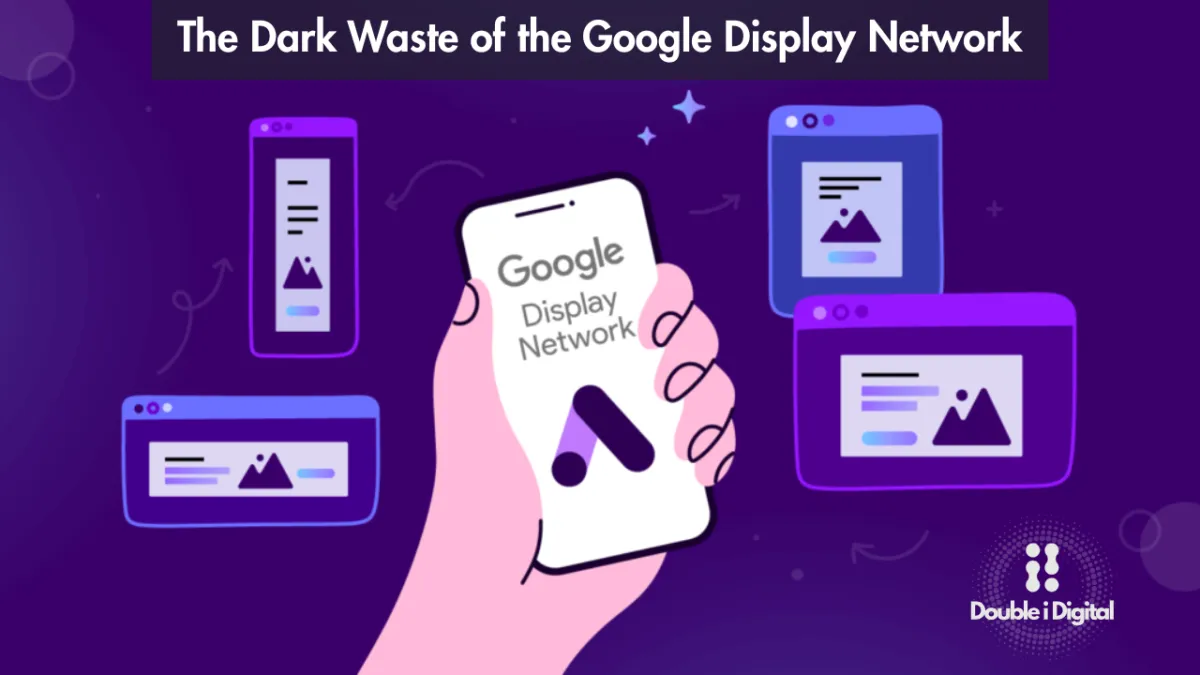
Where Google Display Wastes Budget in PMax (and How to Fix It)
The Dark Waste of the Google Display Network
If you’ve ever opened a Performance Max placement report and wondered, “Who exactly is clicking these ads?” — you’re not alone.
Beneath the buzz of AI-driven media buying, Google’s Display Network (GDN) has quietly become one of the biggest budget drains in PMax campaigns. It’s subtle. It’s hard to see. And it’s costing brands real money every single day.
This post breaks down why Display waste happens, where it hides, and how we claw back performance without blowing up the whole campaign.
The Problem With Performance Max + Display
Let’s start with the reality: you can’t opt out of Display inside PMax.
Unlike Search, Shopping, or Video — Display placements are often the least visible, least qualified, and most expensive in terms of return. Think:
App placements
Gaming sites
Misclicks from mobile banner spam
Taboola-style clickbait partner sites
And because Google doesn’t show full placement transparency inside the PMax UI, most advertisers don’t even know where half of their spend is going.
So why does this matter?
Because Display eats a disproportionate amount of impressions and early spend — especially for newer campaigns or weaker product feeds — dragging down your efficiency before you’ve even started optimizing.
Where Display Waste Shows Up
You’ll typically see the effects in two places:
Low-Intent Clicks
Huge impression volume with abysmal CTRs, sky-high bounce rates, and almost no downstream activity.
Example: 7,000 impressions from mobile app placements, 15 clicks, 0 add-to-carts, 0 revenue.Weird Conversion Paths
Conversions that show up in reporting but don’t align with what actually drives revenue.
This can happen when view-through conversions are misattributed from Display impressions, giving false credit to channels that aren’t actually moving the needle.
How We Spot the Leaks
You can’t rely on the PMax interface alone. Instead, we’ve built a layered approach using these methods:
Use Placement Reports from GA4 or Campaign-Level Tools
While Google hides most placements inside PMax, some will show up in GA4 under “source/medium” or “page path.” Dig into these regularly.Watch for Sudden Spikes in Impression Volume
If your campaign suddenly balloons in reach but ROAS drops, Display is likely involved.Compare Assisted vs. Last-Click Conversions
This helps separate real purchase paths from noise. If Display is inflating view-throughs but not showing up on last click — it's a red flag.
How We’re Clawing Budget Back
You can’t turn Display off entirely in PMax — but you can fight back strategically:
Run a Zero-Asset PMax Campaign
One of the simplest ways to cut off Display entirely is by running a zero-asset PMax campaign — deleting every asset from the campaign: headlines, images, sitelinks, videos, all of it.
This effectively reverts your campaign to behave like Smart Shopping: no Display, no YouTube, just Shopping placements.
Worried about losing valuable, high-intent YouTube impressions? Good — you should be. That’s why we recommend spinning up a dedicated Demand Gen campaign to isolate YouTube spend, control the message, and keep prospecting efforts clean.Build Stronger Feed Signals
Google leans heavily on your Merchant Center feed to determine where and how to show your ads. Weak feed = more Display filler. Beef it up with clean titles, optimized descriptions, and high-quality imagery.Isolate Display-Heavy Campaigns
Duplicate your campaign, segment it by audience signal or product line, and monitor performance. If one version starts leaning Display-heavy, adjust asset groups or bidding accordingly.Trim the Asset Groups
Don’t overload PMax with creative fluff. The more banners, videos, and headlines you jam in, the more ammo Google has to spray across low-intent inventory.Use Account-Level Placement Exclusions
Yes, it’s tedious — but building a master exclusion list across your account can help suppress the worst Display offenders. Think: mobile app categories, game sites, and junk traffic hubs.Add High-Intent Audience Signals
While not a direct fix, stronger audience signals (based on converters, engaged site visitors, or CRM uploads) give PMax a nudge toward more qualified traffic sources — and away from Display sludge.
The Broader Lesson
Google’s Performance Max promises efficiency at scale — but the Display Network is the fine print most advertisers miss.
The system isn’t broken. But it’s not perfect. And if you’re not actively shaping how your campaigns learn and spend, you’re letting Google spend your budget on their terms.
Takeaway:
PMax is only as smart as the guardrails you put around it. Know where it bleeds — and patch it fast.
